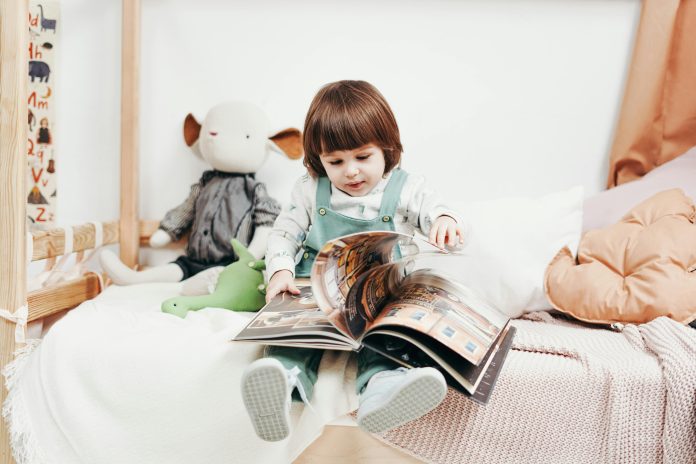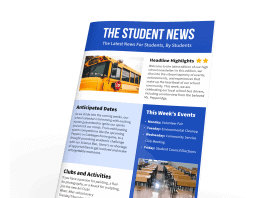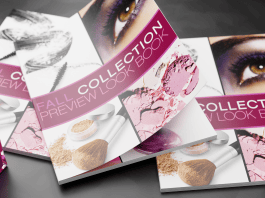When publishing books for a young audience, choosing the right printing format—whether a standard hardcover or a board book—is crucial based on the target age range and subject matter.
What is a board book vs. a hardcover? Both options have their benefits, but how do you determine which choice is right for your needs? In this article, we’ll explore both options to help you decide what’s best for your printing project.
The Difference Between Board Books and Hardcovers
So, what does a board book mean, and how does it compare to hardcovers? There are key differences between these two options in terms of durability, shape, and appearance. Board books are sturdy and durable, ideal for very young children, while hardcovers may be more suitable for older children and offer versatility across a wider range of book products. Let’s examine these two options in more detail.

What is a Board Book?
Board books are specifically designed for very young readers, making them a top choice for parents, educators, and authors. Each page, including the cover, is printed on durable cardboard or paperboard, often featuring rounded edges to ensure safety. Compact and highly durable, board books can withstand tearing, biting, and spills, making them perfect for babies, toddlers, and preschool-aged children. They often feature bright colors, textures, and interactive flaps to engage young readers. These books typically contain 12 to 24 pages.

Benefits of Board Books
- Safety: Designed with young readers in mind, the rounded edges and sturdy pages help prevent injuries.
- Engagement: Interactive elements like flaps, textures, and vivid colors captivate and stimulate young readers’ senses.
- Durability: The thick, cardboard pages are resistant to tearing in board books, meaning they’re ideal for young children who are still developing their motor skills.
What is a Hardcover Book?
Hardcover books, or hardbacks, feature a thick, rigid cover made of cardboard covered in cloth or durable paper, along with a sewn binding. Suitable for older children, teenagers, and adults, hardcovers are popular for various uses, including novels, textbooks, and collector’s items. They have a premium appearance and are more durable than paperbacks, though they come with a higher production cost. Hardcover books are often cherished as keepsakes.

Benefits of Hardcover Books
- Aesthetic Appeal: With their premium look and feel, hardcovers are often chosen for special editions and high-quality publications.
- Durability: Though not as suited to rough handling as board books, hardcovers are still durable and can last for decades with proper care.
- Versatility: Suitable for a diverse range of genres and readers, from young children’s stories to complex academic texts and adult novels.
For more insights on when to choose a hardcover book, check out “When Should You Choose Hardcover Books?” on Printivity Insights.
Board Book vs. Hardcover: Which Type of Book is Right For Me?
Deciding between a board book and a hardcover is crucial, as your choice will significantly impact the book’s usability and appeal based on the specific needs of your target audience and the intended content of your book. Here are some critical factors to consider:
Cost
- Board books are generally more cost-effective to produce due to their simpler manufacturing process, which involves fewer materials and less labor.
- Hardcover books require a larger budget due to more complex printing and assembly processes, including the use of more expensive materials like cloth or leather covers.
Audience
- Board books are designed for very young children who are just beginning to explore books, providing durability and resistance to wear and tear from activities like chewing and throwing.
- Hardcover books cater to a more mature audience, offering a more sophisticated reading experience that appeals to older children, teenagers, and adults.
Content-Length
- Board books typically contain fewer pages and are suited for delivering short, engaging stories or concepts in a format that very young readers can physically handle with ease.
- Hardcover books are better suited for longer, more complex narratives or detailed subject matter, providing ample space for text and illustrations without constraints on page count.
Durability
- Board books are specifically engineered to endure the rigorous handling typical of toddlers and young children, making them nearly indestructible in everyday use.
- Hardcover books, while durable, are best preserved under more controlled conditions and offer longevity as part of a cherished collection or as educational resources.
Shape and Edges
- Board books feature rounded edges to prevent injuries during the enthusiastic play of toddlers and young children.
- Hardcover books often feature a more rigid, defined edge, which contributes to their traditional aesthetic but requires careful handling to avoid wear or injury.
Appeal and Use
- Board books often utilize bold, simple imagery and minimal text to attract the attention of very young readers, but they may not hold the interest of older children who seek more substantial content.
- Hardcover books have a premium appearance and are versatile, suitable for various scenarios such as novels, textbooks, high-end marketing materials, and collector’s items.
Board books offer safety and convenience for projects aimed at very young children. Hardcover books are preferable for collectible, visually impressive projects or longer content. By understanding these differences and aligning your book’s format with your project’s goals and audience, you can enhance the reading experience and maximize the value of your publication.
Print Your Book at Printivity
Ready to bring your vision to life? Whether you’re printing a durable board book for little hands or a premium hardcover that lasts, Printivity is your partner in this creative journey. Our custom book printing services are designed to match your specific needs and vision. Contact us today to start creating your book. Discover how Printivity can turn your publishing dreams into reality.
Board Book vs. Hardcover FAQs
If you’re considering printing a board book or a hardcover, here are answers to some frequently asked questions about these formats.
Why are board books cheaper than hardcovers?
Board books are generally cheaper than hardcovers because they are shorter and less complex to produce. They typically have fewer than 24 pages and use thick cardboard, which simplifies the manufacturing process. In contrast, hardcover books require more materials and a more intricate assembly process, contributing to higher costs.
Which is cheaper: board book or paperback?
When evaluating the cost of children’s book formats, the comparison between a board book vs. a paperback is particularly relevant. Board books, typically designed for the earliest readers, are constructed from thick, durable cardboard pages. This material choice, while enhancing the product’s longevity and resilience against rough handling, also contributes to a higher production cost compared to paperbacks. Paperbacks, on the other hand, utilize lighter, more cost-effective materials such as thin paper and soft covers, making them less expensive to produce.
How long do hardcover books last?
Hardcover books, if cared for properly, can last between 40 to 60 years or longer. The sturdy construction of hardcover books makes them suitable for long-term use, especially if they are made from high-quality materials and stored under ideal conditions.
How long do board books last?
The lifespan of a board book can vary based on its usage. While they might only last a few years under the strain of teething toddlers, they can endure as long as hardcovers when treated more gently. Designed for rough handling, board books are inherently durable and can last many years under typical usage.
When is a paperback better than a hardcover?
Paperbacks are generally cheaper to produce and purchase than hardcovers and offer a lightweight, portable alternative perfect for reading on the go. While hardcovers are a durable and aesthetically pleasing option, paperbacks may be preferred for their convenience and lower cost, especially for readers who value portability over durability.
What are the common sizes for board books and hardcovers?
Board books usually come in smaller, square sizes that are manageable for little hands, making them ideal for young children. Hardcovers, however, are available in a variety of sizes ranging from small novels to large coffee-table books, catering to a wide array of uses and preferences.
How do you care for board books and hardcovers?
To prolong the life of board books, keep them clean and dry, and try to prevent young children from chewing on them. Hardcovers should be stored upright on bookshelves to avoid warping, and dust jackets should be kept intact to protect the covers from wear and tear.




